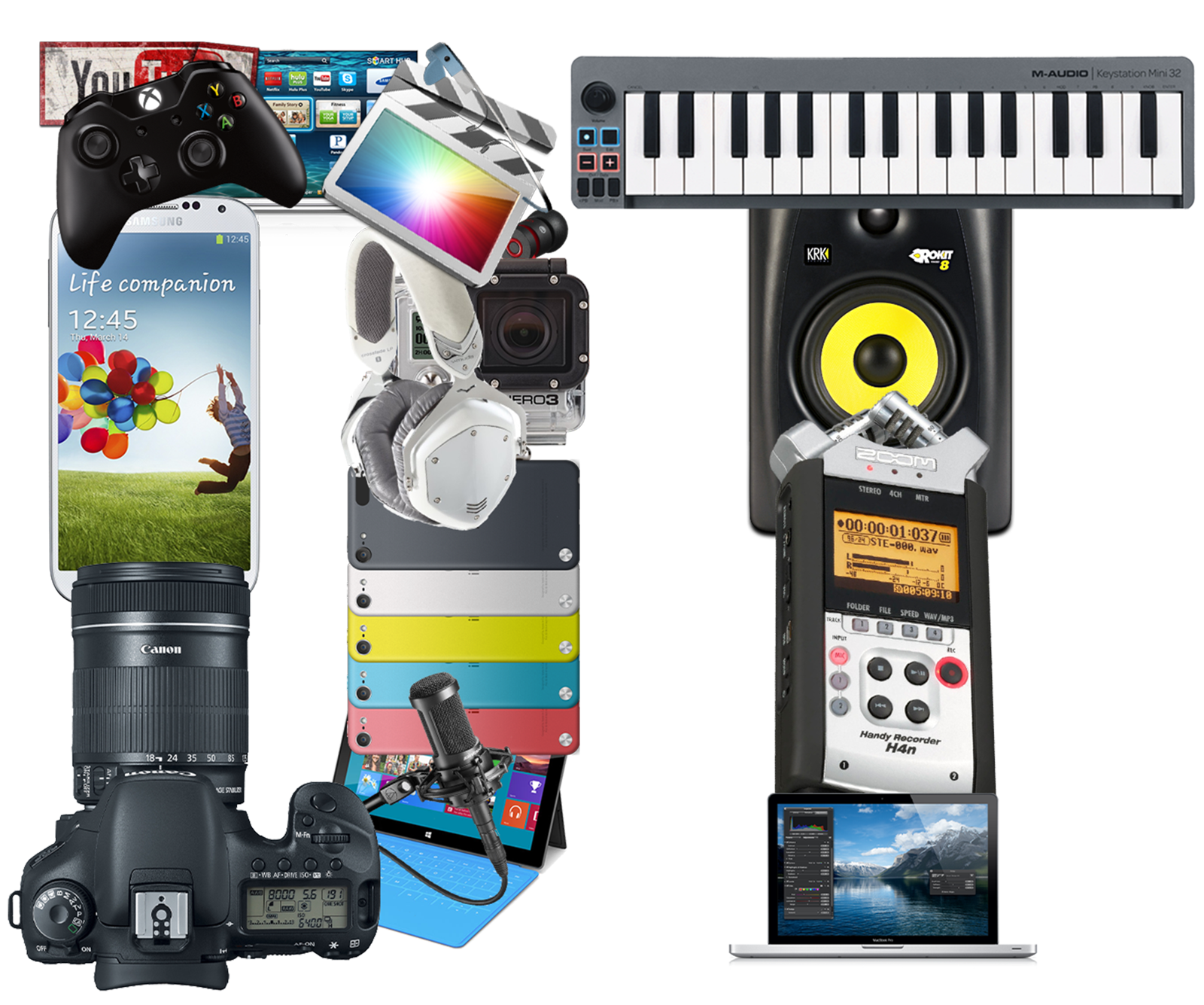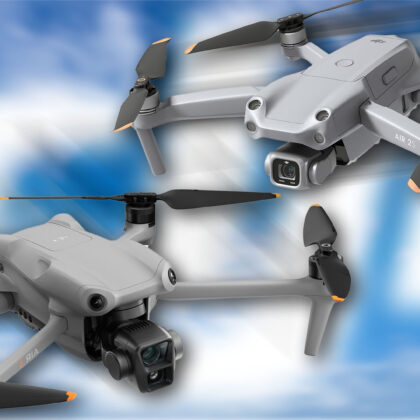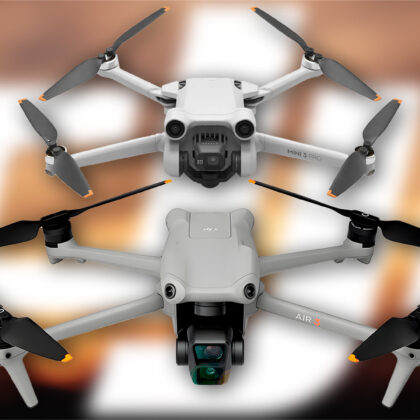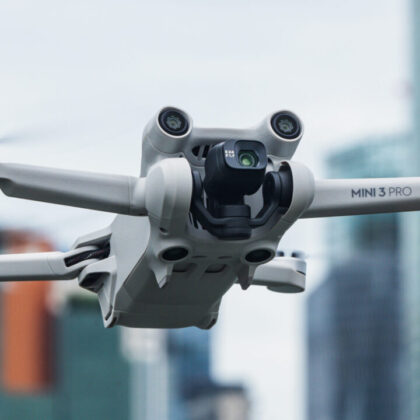
It may technically still be fall, but for much of the northern United States, winter temperatures have already become the norm. For many drone fliers, this signifies the end of flying season and they pack away their drone for the winter. However, winter snow makes for great photography and videography opportunities and with just a little preparation both you and your drone can be ready to thrive in the cold.
1 — Keep the batteries warm
Arguably the most important thing about winter flying is making your drone’s batteries stay warm. Cold weather can quickly cause the high-density lipo batteries used by drones to lose their ability to hold a charge. Left unchecked this can cause a fully charged battery to discharge faster than expected while in the air — resulting in an emergency landing (best case scenario) or the drone simply falling out of the sky.

To avoid this it is key to make sure you do two things when flying in cold weather: keep your batteries warm up until the last moment before takeoff and limit flight times when the temperature gets below freezing. To make sure the batteries stay warm before you put them in the drone keep them indoors, in your car, or even your coat pockets — anywhere that will keep their internal temperature up — until the moment before takeoff.
As the temperature drops farther below freezing (somewhere below 20°-25°F) you’ll also want to consider limiting flight times. The colder the outdoor air, the quicker the battery will cool and potentially start losing charge.
Additionally, also make sure you keep your controller and smartphone warm while flying to prevent the internal batteries from getting cold and potentially shutting down.
2 — Warm clothes too!
The second most important thing about winter drone flying is wearing warmer clothes. A 10-15min flight even when temperatures are in the high 30°’s can leave you shivering with numb fingers — never a good recipe for smooth drone shots.

Dressing as if it is 10-20° colder is a good start, but the constant struggle is how to keep your hands warm while flying the drone. Thin “liner gloves” — like these from Burton — and even dedicated photography fingerless gloves are probably the easiest/most economical ways to go. However, if you find yourself flying frequently in cold environments, you may opt to pick up a dedicated transmitter glove that shields your hands and the controller from the cold (while also making you look rather silly).
3 — Ice, ice baby
Besides battery life, the next most important thing to keeping a drone aloft are its motors and propellers. Cold temperatures and moist air can lead to ice accumulating on the propellors, even when the temperature isn’t below freezing.
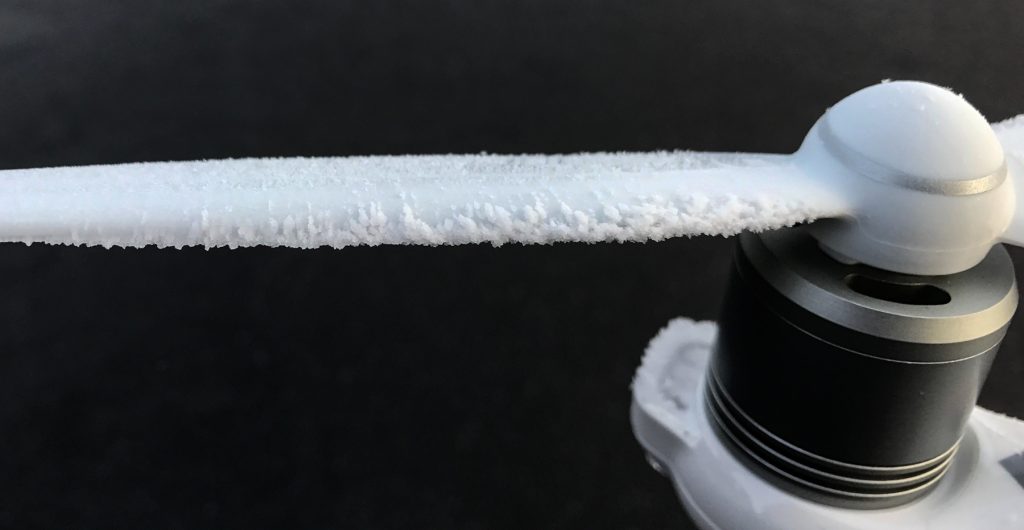
Since the low-pressure area above the propellors (similar to a plane wing) can have a higher freezing point than 32°, it is important to monitor your drone’s flight characteristics whenever the temperature dips below 40° — especially if there is any mist or precipitation in the air. If ice does build up it will quickly start to decrease the propellor’s efficiency causing your drone to work harder to stay in the air.
Like with batteries and cold weather, keeping flights shorter is always a good bet. The less time you give the ice to build up, the less likely you’ll have an unexpected crash.
4 — Clear the runway
Drones take off from the ground. This isn’t an issue for most of the year, but when winter comes around finding a snow-free spot can be somewhat difficult to downright impossible.
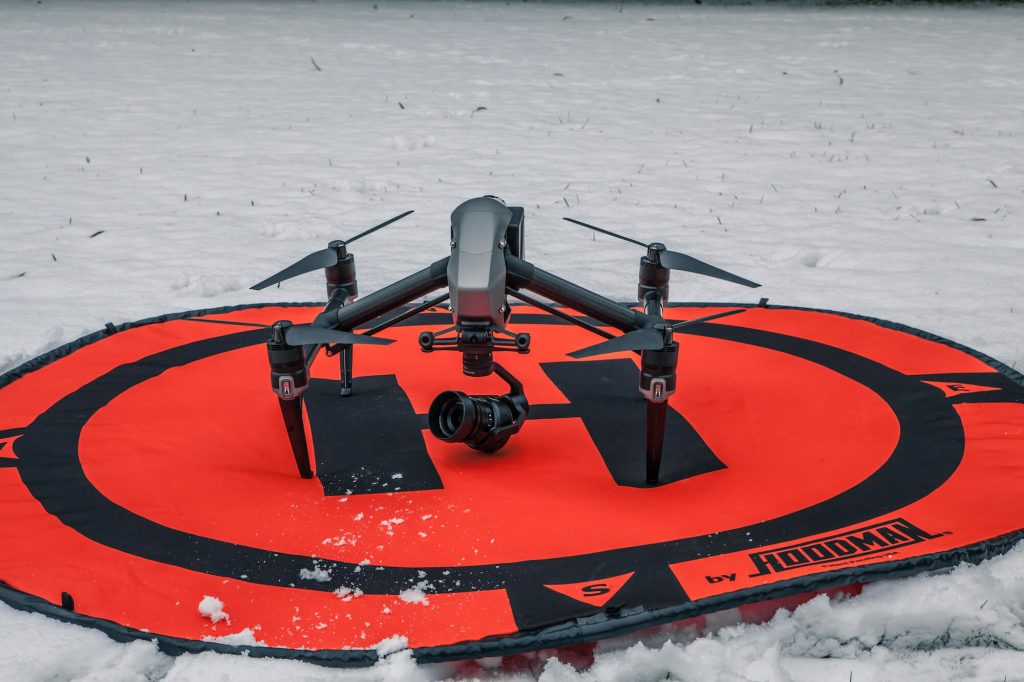
In a pinch, you can stomp down or kick aside the snow with your boots in order to make a small area suitable for setting your drone. However, this gets tiresome rather quickly, as does carrying a small shovel. To look like a professional drone pilot and takeoff/landing in the winter easier, get yourself a collapsible landing pad.
Hoodman makes a very nice landing pad that comes in a 2′ model for Spark/Mavic Mini/Mavic Air type drones, a 3′ version for Mavic Pro/Mavic 2/Phantom 4 sized drones, and even 5′ & 8′ models for Inspires, Matrices or Alta 8’s. Though the pads by Hoodman are more expensive than other brands such as PGYTECH and Fotodiox, they are edge-weighted which means you don’t have to bother with stakes or pegs to keep it on the ground.
Now just wait for snow ❄︎
Follow those four tips and you should be well on your way to flying safely in the winter. Now just wait for fresh snow to fall and you’ll be ready to capture beautiful winter drone footage (check out the video below for some inspiration).
